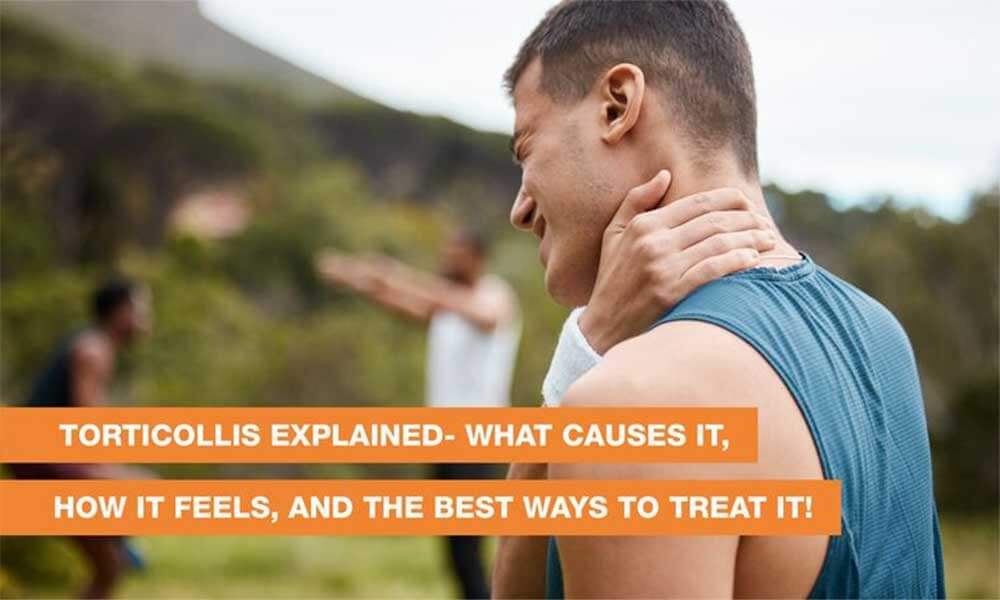Request Appointment
Enter your details and we will be in touch with you shortly;
Or call
8655885566
between 8 am and 8 pm.


What is Torticollis? It is a muscular condition affecting the neck, leading to neck stiffness, muscle tightness, and abnormal neck posture. People with this condition experience neck muscle spasms, causing a head tilt or limited neck rotation. It could be a condition that can be contracted by every individual, ranging from babies to adults.
Torticollis is a wry neck and can be temporary or chronic. The ranges in intensity and the ways they manifest range from being self-limiting to needing medical attention. In severe cases, untreated torticollis can lead to spinal deformity, making movement even more complex over time.
The symptoms of torticollis vary depending on the severity of the condition. Common signs include:
Some cases of spasmodic torticollis involve sudden and unpredictable neck muscle spasms, making normal head movement extremely painful. If these spasms are left unnoticed, they progress to occur more frequently and can interfere with daily activities.
Other factors, such as injuries, tumours or abnormal neck posture, can also contribute to torticollis. Consequently, the vital step is the identification of the root cause of the problem.
There are different types of torticollis, each with unique causes and symptoms:
Torticollis in adults is often caused by cervical dystonia, poor posture, or injury. Symptoms include neck pain, difficulty moving the head, and abnormal neck posture. Adults with chronic torticollis may find it challenging to perform daily activities due to persistent muscle tightness and neck stiffness.
Newborns can develop torticollis, often called wry neck. Torticollis treatment for babies focuses on stretching and positioning techniques.
Parents should consult a pediatrician if their baby shows signs of limited neck rotation or abnormal neck posture to ensure proper torticollis treatment baby.
A doctor diagnoses torticollis through:
The treatment of torticollis depends on the severity and cause.
At QI Spine, we specialize in non-surgical treatments for spine-related conditions, including torticollis. Our advanced diagnostic techniques and customized physiotherapy programs help patients regain mobility and live at their best.
Managing torticollis pain involves:
Understanding what is torticollis helps in early diagnosis and treatment. Proper care and physical therapy can make a significant difference when dealing with torticollis in adults or newborns. If you experience persistent neck pain or difficulty moving the head, seek medical advice to explore effective treatments.
The sooner torticollis is diagnosed, the better the chances of successful management. Early intervention with stretching exercises, neck braces, and physical therapy can help prevent long-term complications. If symptoms persist, consult a specialist to discuss advanced treatment options for torticollis.
Visit our nearest clinic for your first consultation
Adult onset of torticollis is characterized by acute, painful neck muscle spasms and is caused by injury or degenerative modification. Unlike most children, they have the congenital kind, which results from muscle tension leading to the development of the head tilt. This condition requires early detection and age-relevant intervention to avoid the worsening of the condition.
Some signs of torticollis are a head tilted to one side, inability of the neck to move freely, and, of course, muscle twitching. Some children and adults might also complain of having a stiff neck and slight discomfort at the back of the neck. This shows that there are signs that, if diagnosed earlier, the best solution can be given to reduce the chances of developing chronic diseases.
Whatever the cause, if torticollis is not treated, signs may become chronic, and the patient might be at risk of developing muscle imbalances, postural or spine alignment problems as well as chronic pain. Muscle contraction can also lead to other forms of headaches hence a decrease in quality of life in the long-run. The ways through which these complications can be avoided is by proper management of promptness.
The best ways to manage torticollis include physical therapy, medications, and exercises for muscles that are affected by the condition, which may take several days to several weeks to alleviate. Yet, the time can be different depending on the harm and the presence of additional complications. The medications are mainly useful in the early stages of the lifestyle, as they lower the recurrence rate and the period of recovery.
It is possible to have torticollis mistaken for other neck conditions like muscle strains, cervical spine conditions, or even certain dystonias. It is easily confused with such conditions as anxiety disorder, obsessive-compulsive personality disorder, and hypochondria, and thus, every clinical diagnosis, sometimes with the help of imaging tests, should differentiate it.